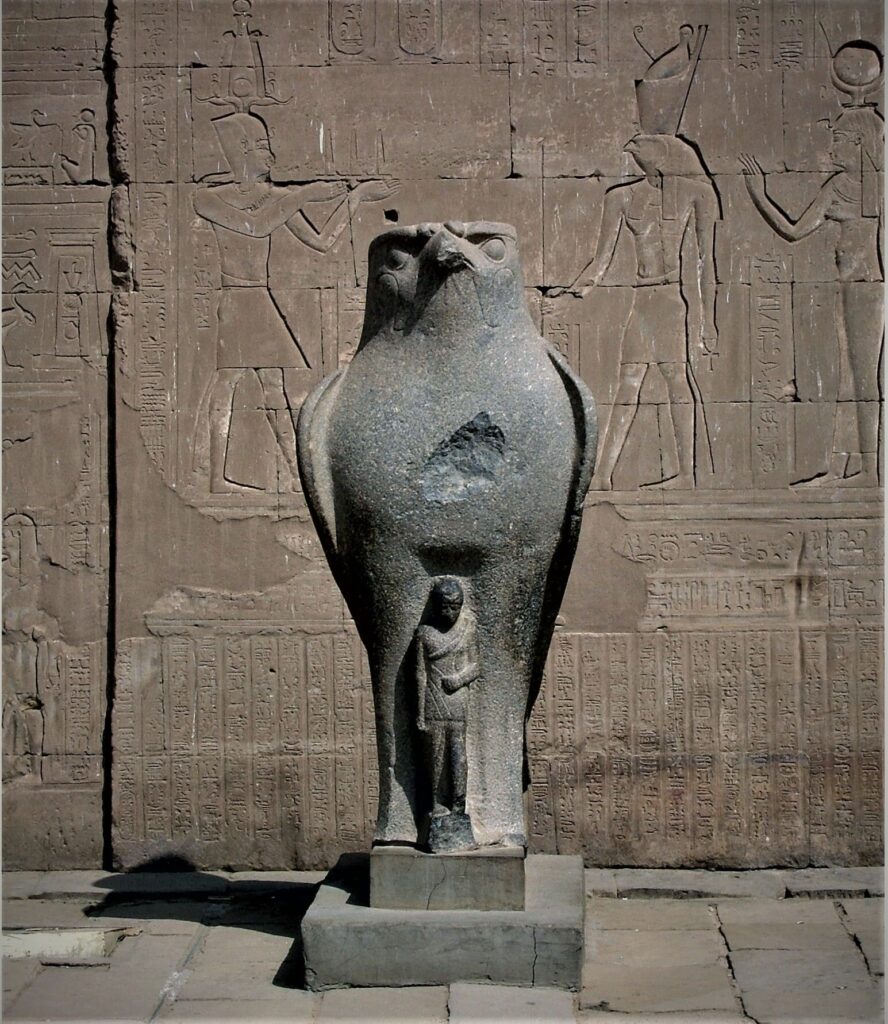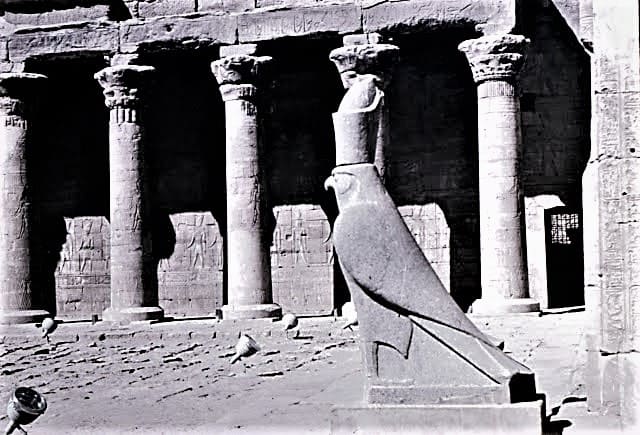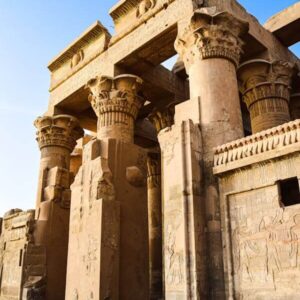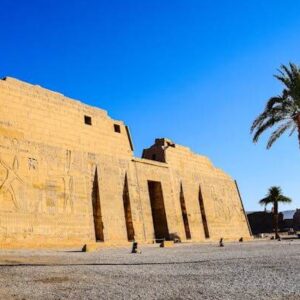
About
The Temple of Edfu or the Temple of Horus is the second largest temple in ancient Egypt after the Temple of Karnak. Located in the Upper Egyptian city of Edfu on the west bank of the Nile, colloquially known in Greek (Ἀπόλλωνος πόλις) and Latin (Apolonopolis Magna) in Hellenistic times, the temple represents one of the last attempts by the Ptolemies to build temples in the style and luxury of their predecessors. It took about 180 years to build the Temple of Horus. The temple was dedicated to the main deity Horus, identified as Apollo according to Greek interpretation. It is one of the best preserved sanctuaries in Egypt.
The temple was built during the reign of the Ptolemaic Kingdom between 237 and 57 BC. C. The inscriptions on the walls provide important information about the language, mythology and religion of the Hellenistic period in Egypt. In particular, the inscribed building texts of the temple «provide details of [both] its construction and information on the mythological interpretation of this temple and all other temples as an island of creation». There are also «important scenes and inscriptions from the sacred drama, relating the ancient conflict between Horus and Seth.»
” was performed during the German Edfu project. Where to Remember the Engraved Symbols and Letters The rituals followed in the past are that the temple building was erected where a great battle between «Horus» and «Set» took place
Building history
The Temple of Edfu was one of several temples built during the Ptolemaic Kingdom, including the temple complexes of Dendera, Esna, Kom Ombo and Philae, the size of which reflects the relative prosperity of the time. The current temple, which was built “on August 23, 237 a. C. In the beginning it consisted of a columned hall, two transverse rooms and a room of the holy of holies surrounded by small niches.» The construction of the temple began during the reign of Ptolemy III, Ptolemy III. Ergetis, and ended in 57 BC
During the reign of Ptolemy XII the Pied Piper. It was built on the site of a smaller earlier temple also dedicated to Horus, although the earlier structure was oriented east-west rather than north-south as at the present site. The building is east of the current temple. Where written evidence has been found indicating the existence of a building program during the reigns of the New Kingdom kings Ramses I, Seti I and Ramses II.
Inside the Holy of Holies in the center of the Temple. The esplanade of the temple faces south-east. The sarcophagus of Nectanebo II, from the remains of an earlier building, survives only in the inner sanctum, while nine niches surround the sanctum. Saints.
The Temple of Edfu fell into neglect as a religious relic after Theodosius I persecuted the pagans and in AD 391. The reliefs were defaced by adherents of the Christian religion that ruled Egypt. The portico’s black ceiling, visible today, is believed to have been the result of an arson attack aimed at destroying religious images believed to be pagan. Over the centuries, the temple has been buried 12 meters (39 ft) under desert sand and river mud deposited by the Nile. The locals built their houses right on the site of the ancient temple from
.
By 1798, only the upper reaches of the temple buildings were visible, when a French mission identified them. In 1860, French Egyptologist Auguste Mariette began removing sand from Edfu Temple. almost intact and is a very fine example of an ancient Egyptian temple. Its archaeological value and well-preserved condition made it a tourist center in Egypt and a frequent stopping point for many river boats navigating the Nile. In 2005, the access road to the temple was renovated and a visitor center.
its religious significance
The Temple of Edfu is the largest temple dedicated to Horus and Hathor, the goddess of Dendera. It was the center of many festivals dedicated to Horus. And every year «Hathor travels south from her temple at Dendera to visit Horus at Edfu, and such an event in celebration of her holy marriage is an occasion for great feasting and pilgrimage.»
You Can View Our Edfu Temple Tours Nowarchitecture in Britain was influenced
The Temple of Edfu supplied a version for the Temple Works mill constructing in Holbeck , Leeds . The columns of the lobby at Edfu are carefully imitated withinside the mill façade.















